 |
|||||||||||||||
John Barron "Jack" McKay, 8 December 1922 to 27 April 1975 (52 years) X-15 Missions: 29 flights from 28 October 1960 to 8 September 1966 Highest Speed: Mach 5.65 (3,863 mph)xxxxxxxxxxHighest Altitude: 295,600 feet (56.0 miles) |
||
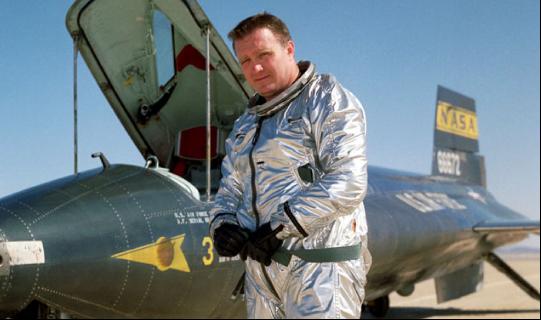 |
 |
|||
John B. McKay, National Aeronautics & Space Administration. X-15 Pilot no. 5. Armstrong Flight Research Center |
Twin baby brothers, Jack and Jim, who would take different life paths in aviation. Sheri McKay-Lowe collection |
|||
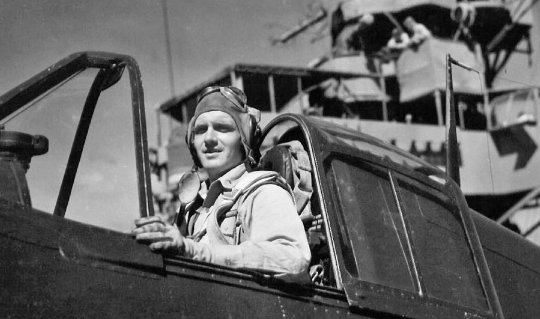 |
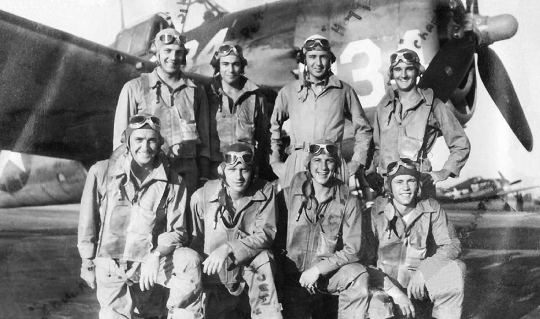 |
|||
McKay on US Navy carrier duty in a Grumman F6F Hellcat. John McKay collection |
McKay (second from left, bottom row) with his Hellcat squadron mates. John McKay collection |
|||
 |
||
John B. McKay and Shirley Mae Londeree wedding day on 2 Aug. 1947. Sherri McKay-Lowe collection |
||
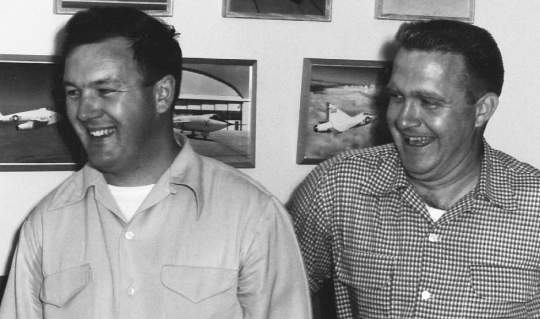 |
||||
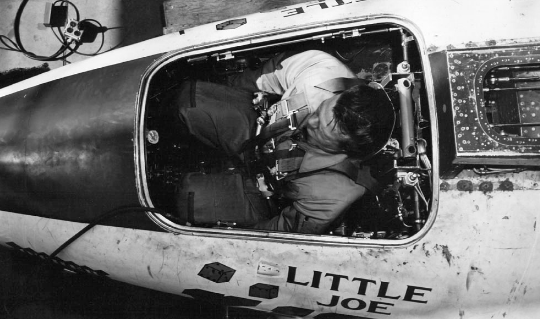 |
||||
Stan Butchart with Jack McKay. Armstrong Flight Research Center |
||||
McKay in the cockpit of the Bell X-1E at the NACA. Sheri McKay-Lowe collection |
||||
 |
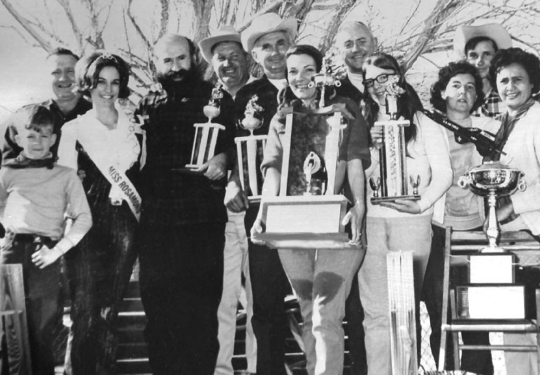 |
|||||
McKay (on left behind Miss Rosamond, Patricia Wombacher) at an event honoring Grace Walker collection |
||||||
Sheri and Jim McKay share an adventure with their father at Red Rock Canyon. Sheri McKay-Lowe collection |
||||||
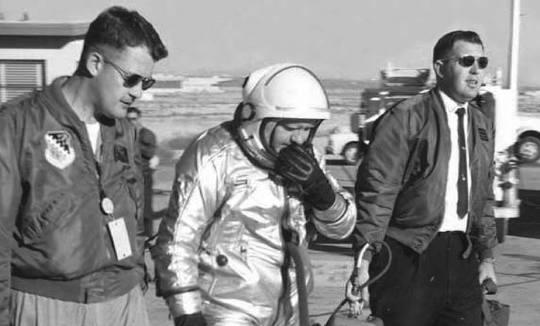 |
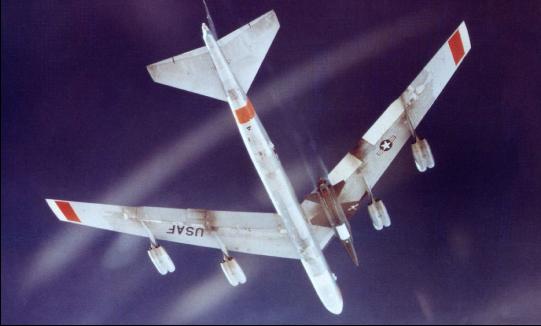 |
|||
McKay heading out to the X-15. Dave Stoddard collection |
Under the B-52 wing, the X-15 prepares for launch. Edwards History Office |
|||
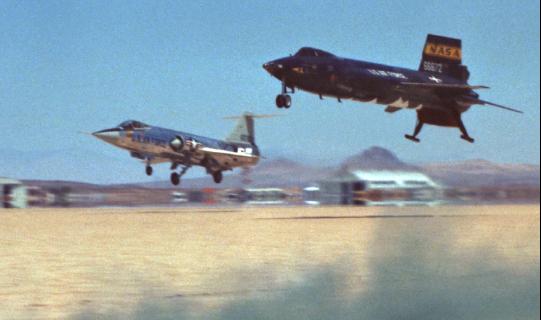 |
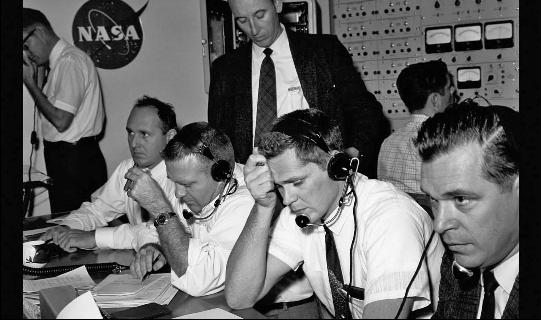 |
|||
Closely tracked by an F-104 chase plane, X-15 no. 3 nears touchdown. Armstrong Flight Research Center |
McKay (sitting with head down, holding a cigar) is the NASA-1 during an X-15 mission. Armstrong Flight Research Center |
|||
 |
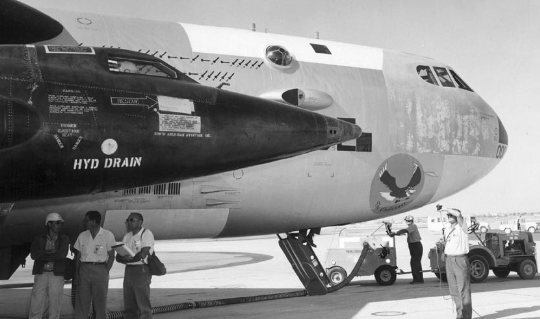 |
|||
(above and below) Three views of Jack McKay in the cockpit of X-15 no. 2 awaiting the start of mission 2-25-45 on 19 Jul. 1962. This would be McKay's first flight past Mach 5. Note in the photo below that someone has used their finger to inscribe "HOT STUFF" into the frost on the X-15's belly. Jack would attain Mach 5.18 (3,474 mph) at 85,250 feet. Armstrong Flight Research Center |
||
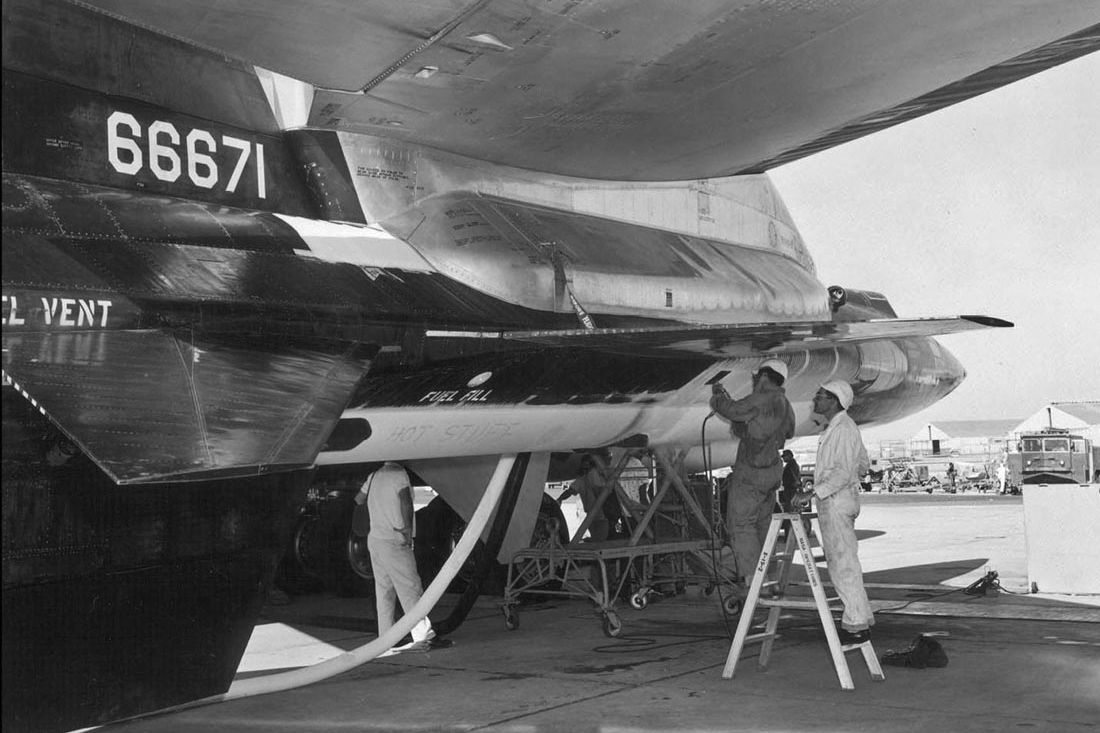 |
||
— Jack McKay experiences a near fatal accident at Mud Dry Lake — |
||
The 74th mission of the X-15, and 31st for the no. 2 aircraft, began with B-52 takoff from Edwards AFB at 09:29 PST on Friday, 9 Nov. 1962. Jack McKay was at the controls for his 7th flight in the rocket plane. At 10:23:07 he dropped away from B-52 no. 008. Pressing the LR-99 throttle forward he only achieved 30 percent thrust, necessitating an emergency landing at nearby Mud Dry Lake. As he approached the lakebed, his flaps would not extend, so he experienced a much higher landing speed than normal, hitting the lakebed at 10:29:28, just over 6 minutes following launch. |
The excessive loads caused the left rear skid to fail at touchdown, starting a chain reaction that flipped the X-15 onto its back as it came to rest. McKay jettisonned the canopy just before the flip, fearing he would be trapped inside the cockpit when it rolled over. Without the canopy to protect him, the aircraft weight transferred to Jack's helmet, compressing his neck and crushing several vertebrae. He was dug out, flown to the hospital where he eventually recovered and flew 22 more research flights in the program. With the exception of the fatal accident of Michael Adams on 15 Nov. 1967, this was the most severe accident in the X-15 program. |
||||
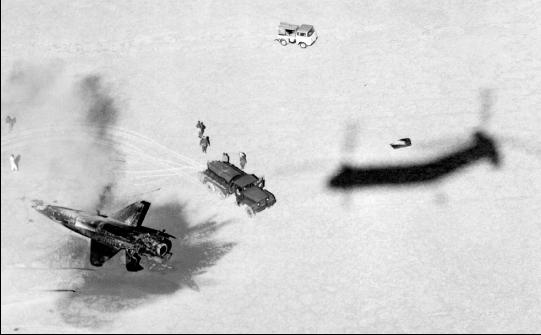 |
|||||
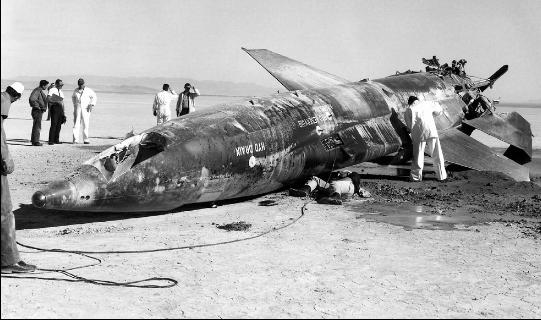 |
|||||
Aerial view of crash site soon after McKay had been rescued from the cockpit. Armstrong Flight Research Center |
X-15 no. 2 flipped on its back following McKay's emergency landing at Mud. Armstrong Flight Research Center |
|||
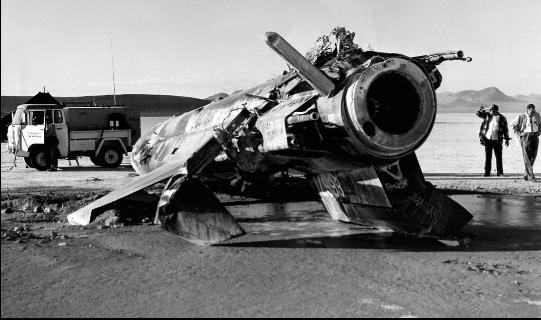 |
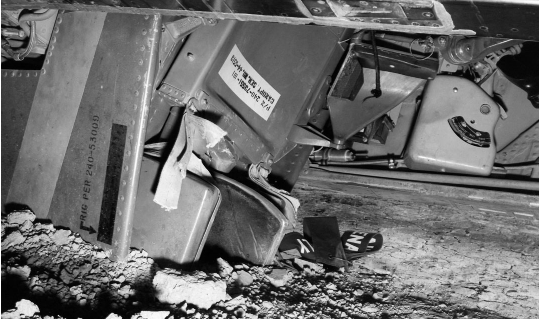 |
|||
Rear view highlighting the collapsed right landing skid. Note the left skid is missing. Armstrong Flight Research Center |
The cockpit seat, with McKay in it, dug into the dirt after the X-15 flipped over. Armstrong Flight Research Center |
|||
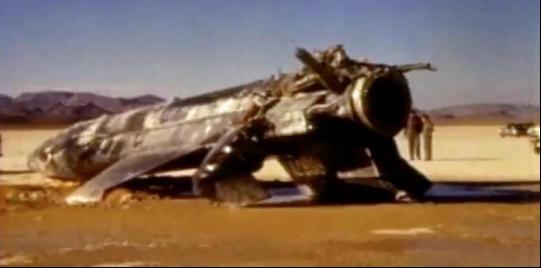 |
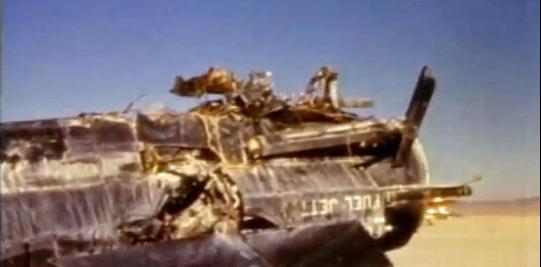 |
|||
Two views of the mangled X-15 no. 2 taken from film of the accident. NASA Headquarters |
||
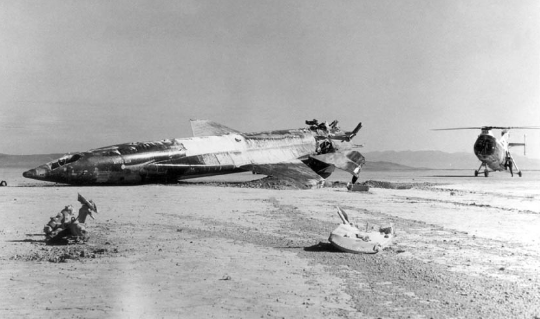 |
 |
|||
Pieces of the X-15 litter the dry lake bed. Armstrong Flight Research Center |
A close-up examination of the failed skid while a photographer records the scene. Armstrong Flight Research Center |
|||
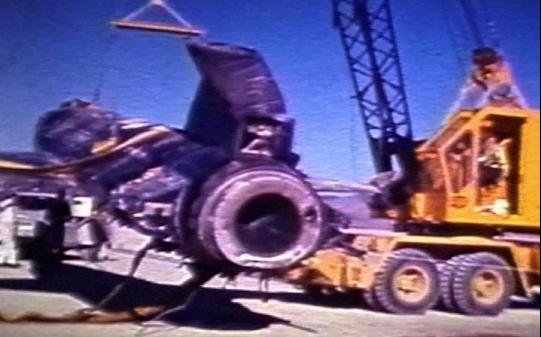 |
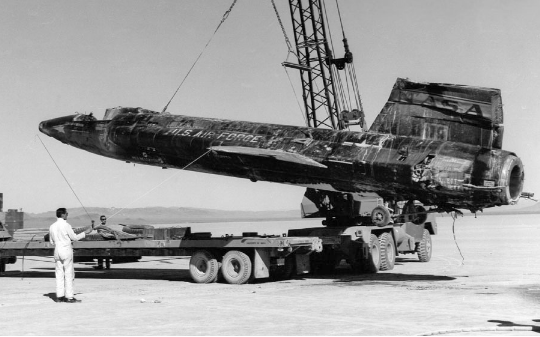 |
|||
Hoisting the mangled X-15 onto the flatbed for the return trip to Edwards. Armstrong Flight Research Center |
||||
Another film frame shows the crushed vertical tail after the X-15 was righted. NASA Headquarters |
||||
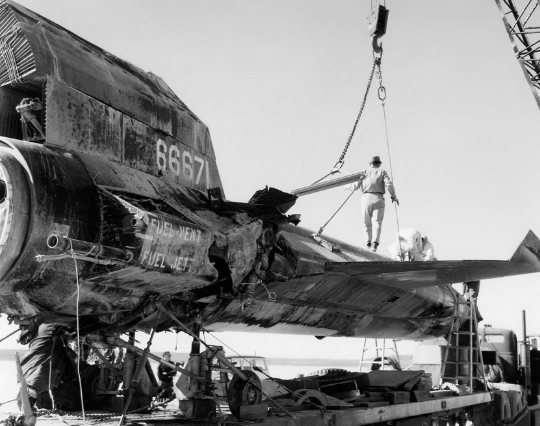 |
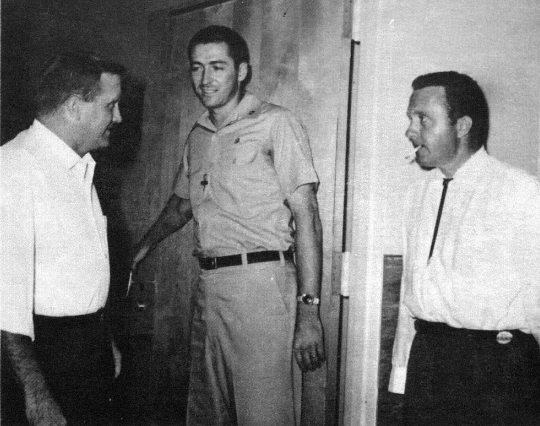 |
|||
Securing X-15 no. 2 to the flatbed. Note the bent vertical tail and right wing tip. Armstrong Flight Research Center |
Jack McKay leaves the hospital. Dr. Lynne B. Rowe and Jack's twin, Jim McKay. Armstrong Flight Research Center |
|||
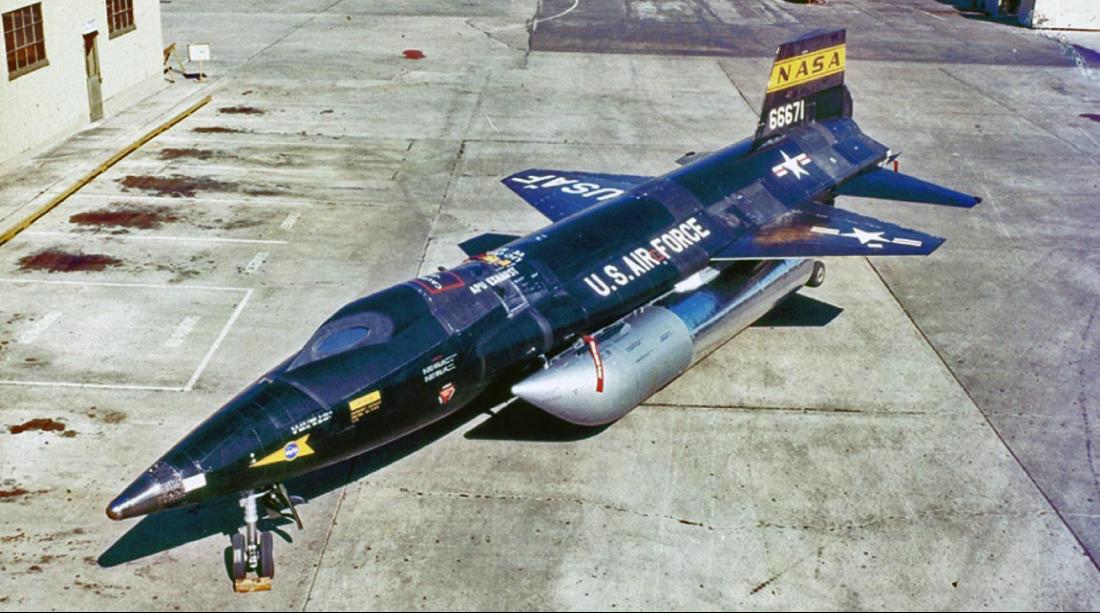 |
||
14 Feb. 1964: Just 15 months after the accident, X-15 no. 2 has been completely rebuilt and is rolled out of the North American Aviation plant in Los Angeles. This rocket plane is given a new designation as the X-15A-2. The fuselage has been expanded by 29 inches and two external tanks have been added for extra fuel and oxidizer, in order to extend the LR-99 rocket engine burn time by 60 seconds. This extra time under thrust could theoretically expand the speed envelope up to Mach 8. North American Aviation |
||
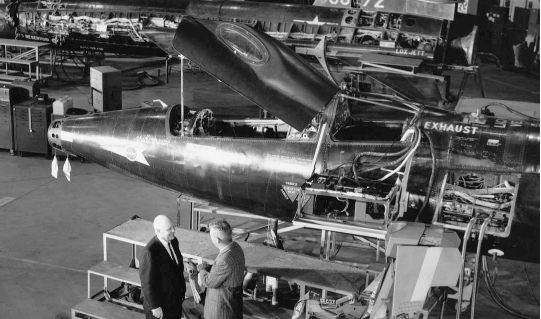 |
 |
|||
Paul Bikle is interviewed in front of the rebuilt X-15 no. 2, now known as the X-15A-2. In the hangar behind the no. 2 aircraft is also X-15 no. 3. Armstrong Flight Research Center |
McKay is greeted by NASA Administrator James Webb following his first flight in the X-15A-2 on 30 Nov. 1964. Walt Williams looks on, just behind Webb. Sheri McKay-Lowe collection |
|||
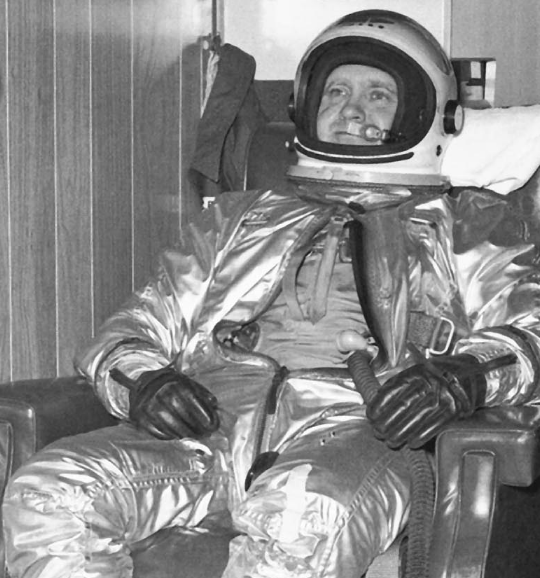 |
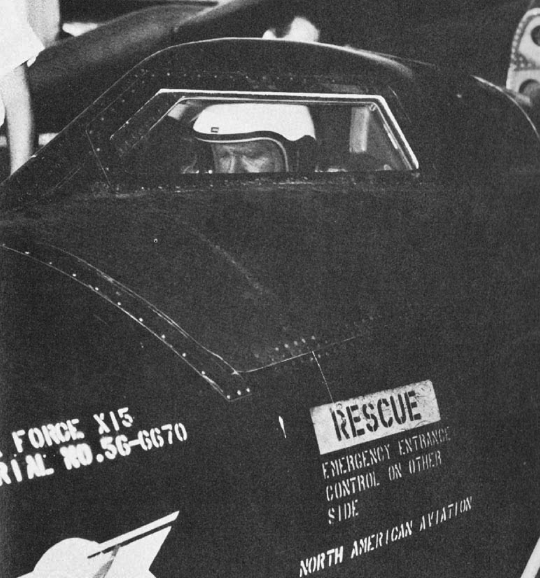 |
|||
McKay in the suiting van relaxing as the suit is checked, before heading to the X-15. author's collection |
Sealed into the cockpit of X-15 no. 1 on the B-52 wing pylon, McKay is ready for flight. author's collection |
|||
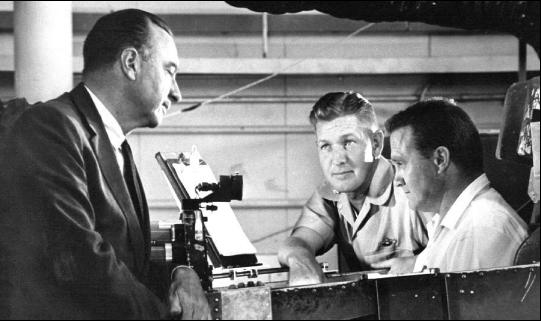 |
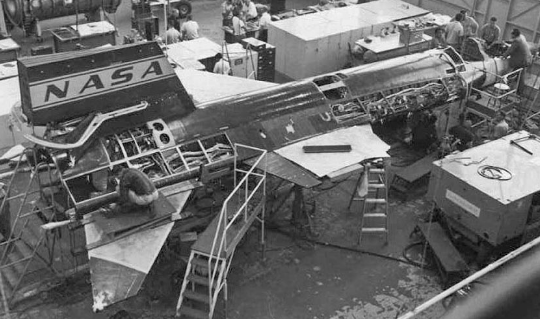 |
|||
Walter Cronkite interviews Rushworth and McKay in X-15 simulator on 22 Oct. 1962. Sheri McKay-Lowe collection |
North American Aviation transforms the mangled X-15 no. 2 into the X-15A-2. author's collection |
|||
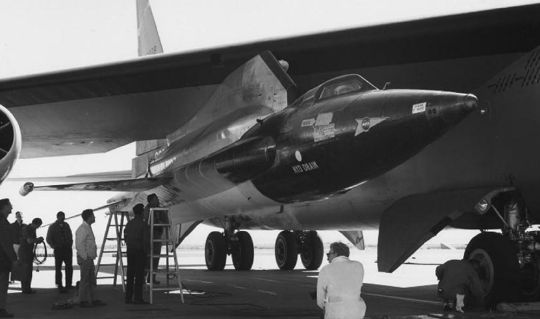 |
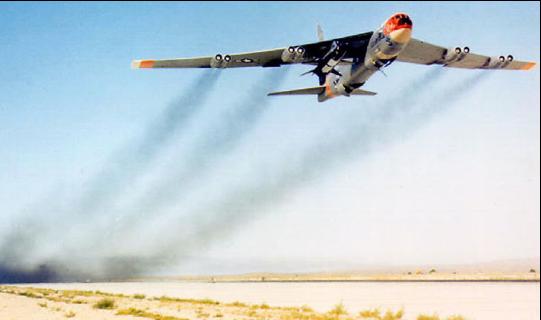 |
|||
Final checks are made before B-52 roll on 26 Feb. 1965 for McKay's 16th X-15 flight. author's collection |
B-52 no. 008, with the X-15 securely tucked under the right wing, leaves Edwards AFB. author's collection |
|||
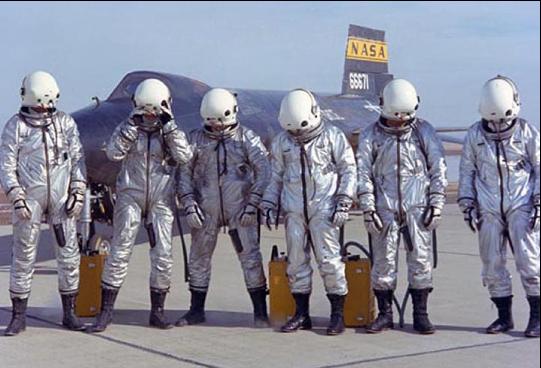 |
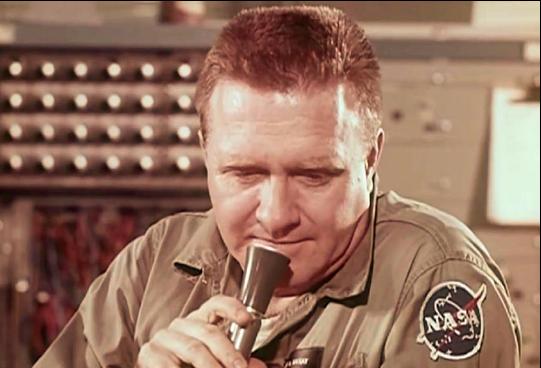 |
|||
McKay serving as NASA 1 flight controller. NASA Headquarters |
||||
Having fun with an X-15 pilot group portrait. author's collection |
||||
— Jack McKay experiences a second emergency landing — |
||
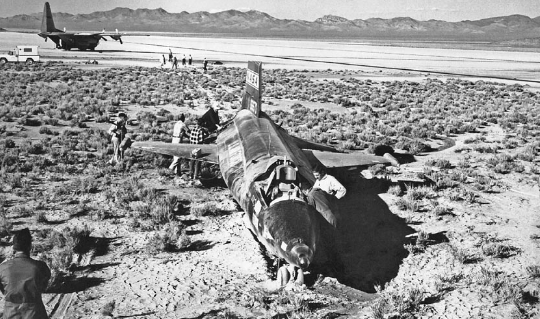 |
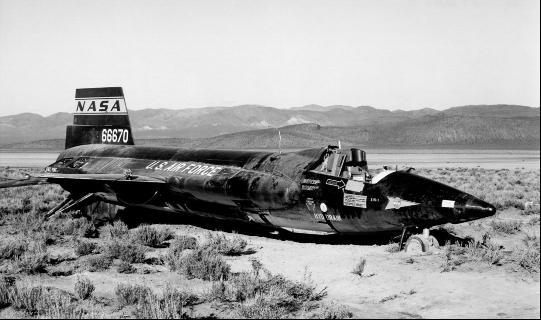 |
|||
Second emergency landing at Delamar Dry Lake on mission 1-63-104 on 6 May 1966. Armstrong Flight Research Center |
Landing long on the dry lakebed, McKay overshot. Note the jettisoned canopy. Armstrong Flight Research Center |
|||
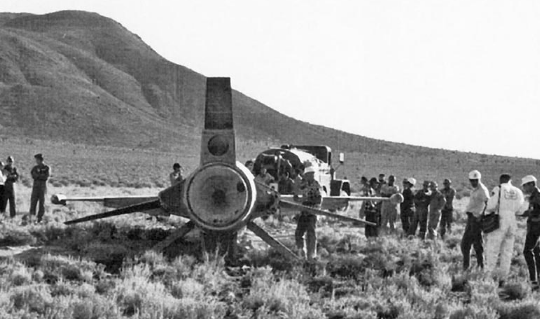 |
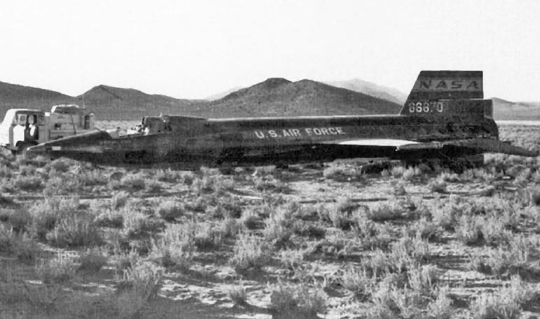 |
|||
More views of the scene off the lakebed at Delamar. A ruptured LR-99 turbopump caused a premature engine shutdown, necessitating the emergency landing Armstrong Flight Research Center |
||
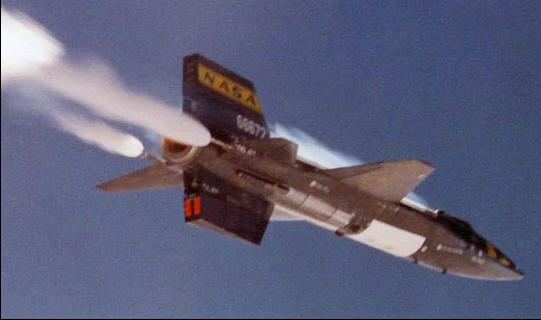 |
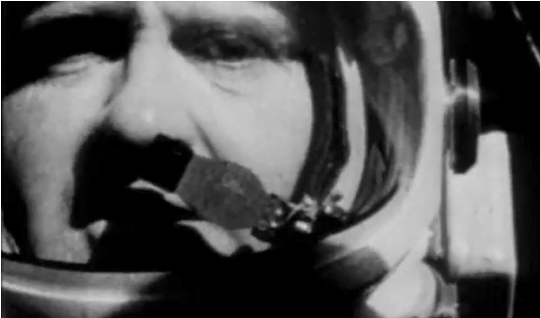 |
|||
X-15 no. 3 under power soon after launch from the B-52 mothership. Armstrong Flight Research Center |
A cockpit camera captures Jack McKay during an X-15 rocket plane mission. author's collection |
|||
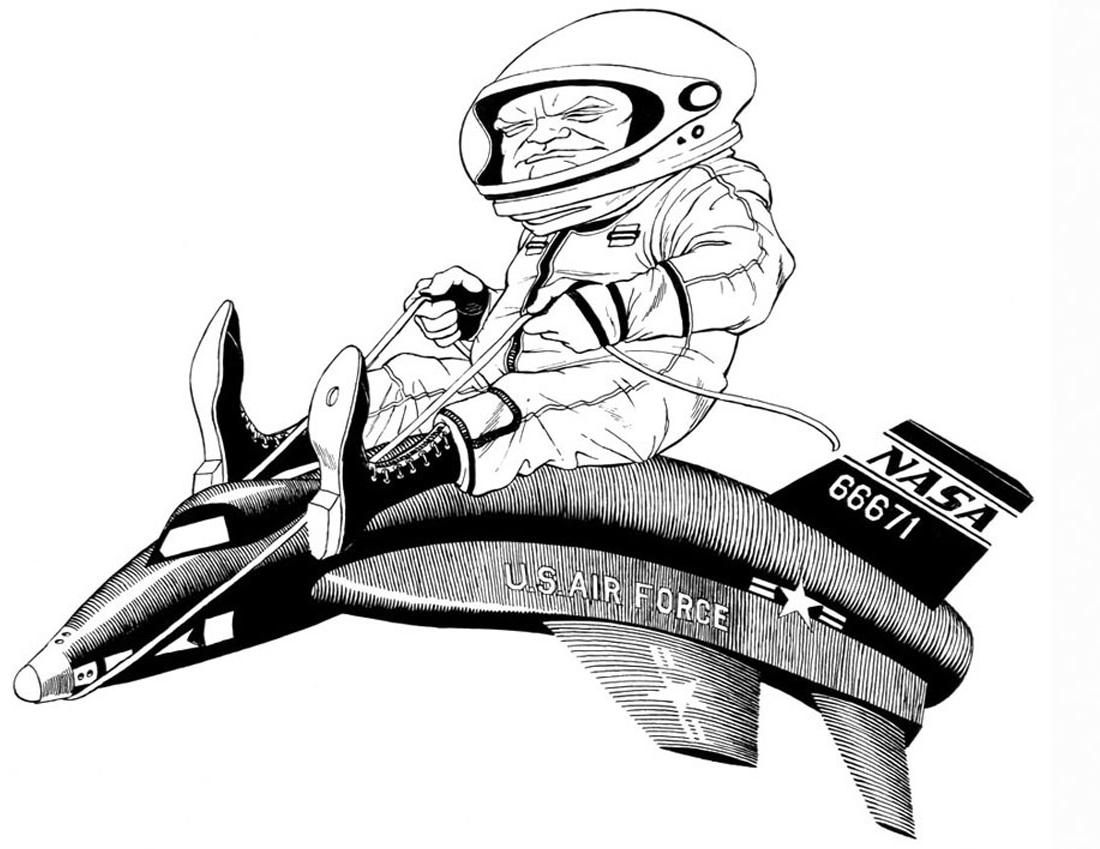 |
||
In a caricature by an artist at NASA Edwards, McKay rides the wild steed of the X-15. Armstrong Flight Research Center |
||
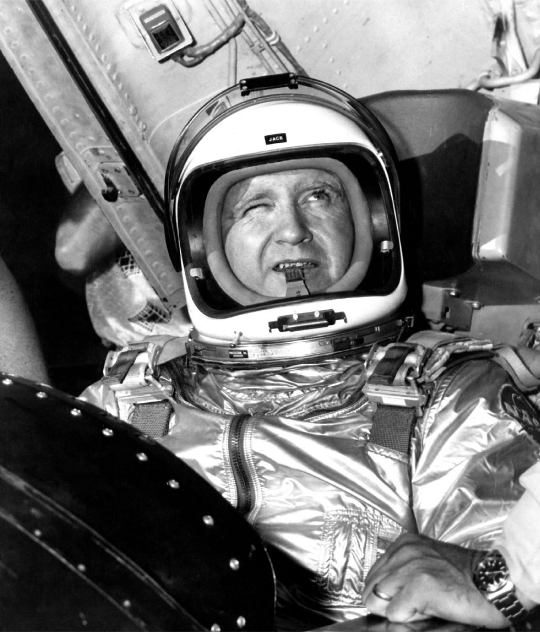 |
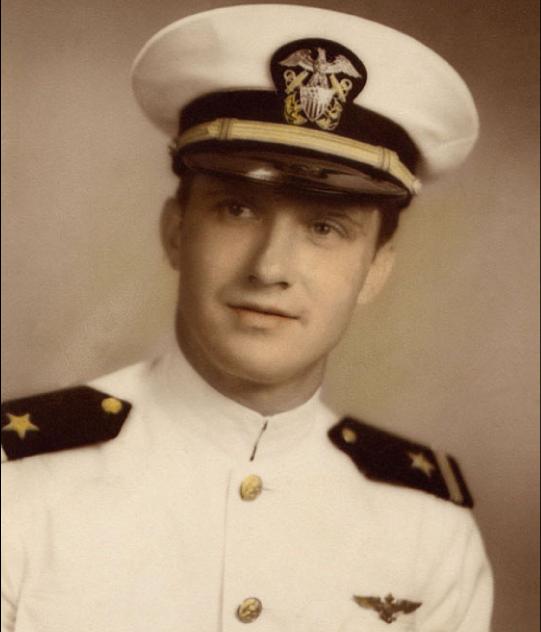 |
|||
McKay squints against the desert sun glare when the canopy is popped after landing. Sheri McKay-Lowe collection |
McKay as a young Naval officer at the beginning of his career. Sheri McKay-Lowe collection |
|||